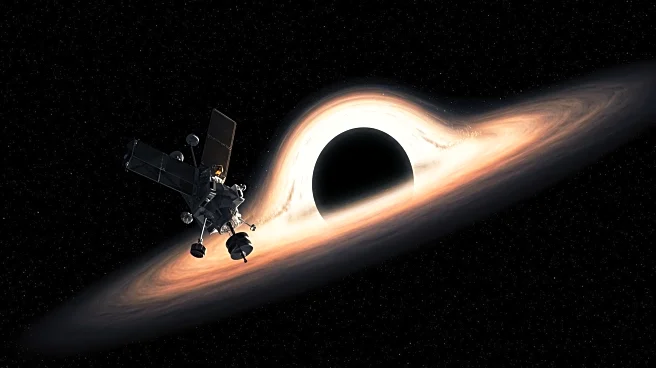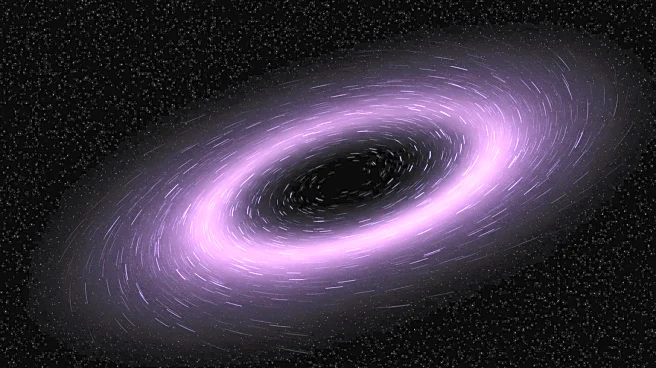Rapid Read • 8 min read
Astronomers have captured a stunning image of a cosmic jet from the blazar PKS 1424+240, resembling the mythical 'Eye of Sauron.' This blazar, located billions of light-years away, is one of the brightest sources of high-energy gamma rays and cosmic neutrinos. Despite its radio jet appearing slow-moving, the blazar emits strongly beamed gamma rays and neutrinos toward Earth. Researchers used 15 years of radio observations from the Very Long Baseline Array (VLBA) to create a deep image of the jet, revealing a near-perfect toroidal magnetic field. This alignment amplifies the jet's brightness due to special relativity effects, providing insights into the structure and acceleration of particles within the jet.
AD
The discovery of the 'Eye of Sauron' blazar enhances our understanding of active galactic nuclei and the role of supermassive black holes in accelerating particles to extreme energies. The findings confirm that these cosmic jets are powerful accelerators of both electrons and protons, contributing to the observed high-energy neutrinos. This research marks a milestone in multimessenger astronomy, linking relativistic jets to cosmic neutrinos and highlighting the importance of magnetic fields in shaping cosmic accelerators. The study provides valuable insights into the mechanisms behind high-energy emissions, advancing our knowledge of the universe's most energetic phenomena.
The discovery strengthens the link between relativistic jets and high-energy neutrinos, paving the way for further research into the role of magnetic fields in cosmic accelerators. Scientists will continue to monitor relativistic jets using techniques like Very Long Baseline Interferometry (VLBI) to study the fine details of distant cosmic jets. Future observations may reveal more about the structure and dynamics of these jets, contributing to our understanding of the universe's most energetic processes.
The study of cosmic jets and their emissions has broader implications for understanding the universe's evolution and the role of supermassive black holes in galaxy formation. The research may also influence the development of new technologies for observing and analyzing high-energy cosmic phenomena, potentially leading to advancements in astrophysics and space exploration.
AD
More Stories You Might Enjoy










